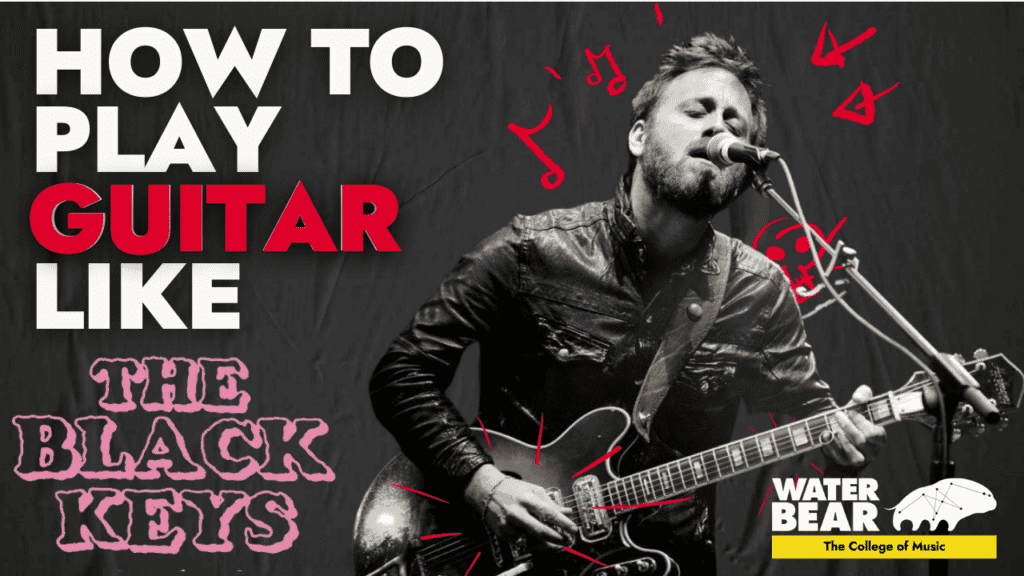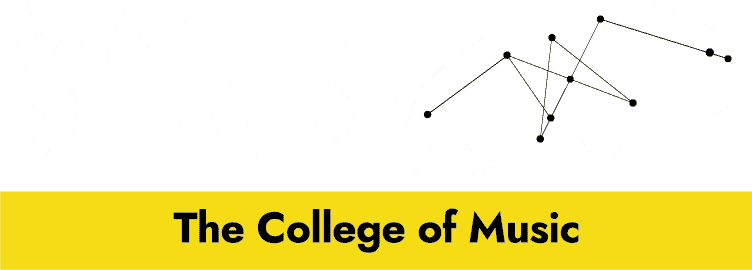
You’re a drunkard. You feel hopelessly depressed, you’ve put on 25 pounds and the music career you once loved is on the ropes due to your band mate (who you haven’t talked to in several months) hating your wife and planning his own solo project. The wife, who you’ve been married to for 2 years and with for 9 has been sleeping with your best friend, lying and manipulating you, pushing you down and running around. But things are set to change. In mid-2009, you make the call, end things with the wife and organise a beer with the estranged band mate, you hug and make up and start planning how to become the biggest band in the world.
This story hits home too hard right? Well, this was reality for Patrick Carney, the drummer for the Black Keys prior to ‘Brothers’. We can start learning from the band before even looking at the songs; never give up on the dream and if your bandmate thinks your partner’s bad news, listen to them, they care about you (and by ‘you’ I might just mean your playing ability). Patrick Carney and Dan Auerbach recorded ‘Brothers’ in mid to late 2009 and released it in 2010, with a now classic album cover design directly influenced by Howlin Wolf’s 1969 release, which read ‘This is Howlin Wolf’s new album….’. This album established them as underdog rockers with growl and attitude and, despite having their feet firmly in blues rock, it won a Grammy for Best Alternative Album in 2011. Although during 2011, something else was ready to fuel their fiery career.
‘El Camino’, which ironically has a Plymouth mini-van on the front, dropped like a bomb in 2011 and secured their status as blues rock heavyweights. The album was written all during recording, so the songs are often short, with apparently the structure of each being the hardest part to decide on. The songs on the album are noticeably more to the point, faster and pull no punches when delivering catchy hooks. Well, apart from ‘Little black Submarines’ which kind of channels ‘Stairway’ vibes. This was an artistic decision as apparently the duo found it hard to maintain energy and do some of the slow burners off ‘Brothers’ justice in a live setting. Once again, another lesson to be learnt, always plan ahead as to how it will sound live. Adding a string section in the studio? Nice, but now try replicating that live with your power trio, you’ll probably need to alter the instrumentation and edit sections to compensate.
In 2014 The Black Keys released ‘Turn Blue’, which although not as commercially successful as ‘El Camino’ garnered very positive critic reviews and was said to have marked a mature turning point in their career. According to the duo, parts of the writing and recording process were incredibly hard with most of the lyrics inspired by Auerbach’s then ongoing divorce and the two disagreeing on whether to pursue radio friendly straight forward hits or take a new melancholic, 70s inspired direction. In the end, the album is a lot more downtempo in comparison to El Camino and features some luscious instrumentation.
To discuss how we can learn from the smart, sharp snarling guitar of Auerbach, we’ll have a look at one track from each of their most successful albums, covering the different ideas which go into such tight blues/garage rock hits.
Maybe a surprise pick considering ‘Howlin for you’ resides on ‘brothers’, but ‘Tighten up’ is a great blend of how the Black keys kept a current rock sound mixed with the perfect blend of nostalgic soul and blues influences. The song is a built around a simple chord progression in F# minor, starting on the 1=F#m, then to the 3rd=AM, to the 4th=Bm and finally to a C#7 to pull us back home to the root chord. Due to how the chords are played, as upstroke stabs, a higher registered voicing works better, cutting through and helping them stand out. I just used the d to e strings and missed out root notes leaving that for the bass. Watching Auerbach live he commonly does the same, keeping all of the shapes between the 7th and 11th frets, using what looks like a simple barre on the 9th fret then 7th for the AM and Bm respectively, just watch out for the B note on the 9th fret as that will alter the sound of the AM to a add 2 sound. The other guitar parts in the track are single note lines built from F# minor pentatonic, being either descending pattern based lines down the scale or a repeated phrase built from the same notes, relying on a thick guitar tone to keep momentum. These simple yet catchy minor pentatonic riffs are an integral part of the Black keys sound and are easy to play/take inspiration from. The accessible nature of the parts is a reason why garage/blues rock is such a popular genre to play, with the riffs catchy and fun to play, being easy for fans to chant along to at a gig.
To create your own Black keys style riffs you’ll need the minor blues scale shapes, a thick fuzzy yet not overly distorted tone and strong melodies. The minor blues scale is just the pentatonic with the flat 5th added and perhaps the major third, but only used to play the ‘blues curl’ and add tension. When constructing chord progressions, once again, not many Black keys songs use more than four chords and mainly use straight forward minor/major/dominant harmony without many extensions or substitutions. The songs often utilise a 1-4-5 and show that there are endless possibilities with just a few chords and great song writing. The Black keys draw heavily from the classics, with artists like Credence, Zeppelin, Free and Freddie King being noted as big influences, so they might be worth a listen to get more into Auerbach’s head.
Arguably the biggest hit from the Black keys entire back catalogue, ‘Gold on the Ceiling’ is really just a ‘best of’ compilation of all the magic ingredients which make them such a catchy riff laden powerhouse of a dynamic duo. The song is in the key of G minor and starts with a very Credence/Cropper intro phrase using power chord or 5th chord shapes descending down to launch into the riff. The song is very hook based, relying mainly on the swagger and strut delivered by a punchy riff to back up the vocals during the verses and the choruses, switching between single notes and power chords. The song has a few catchy solo breaks, where Auerbach uses a very ‘are you gonna go my way?’ style G string bend up in the 15th fret G pentatonic shape. Once again, very simple yet effective note choices. The solos are used when coming out of the choruses, a fairly common place for catchy solo parts in instrument-based pop tracks - think ‘Fire’ by Kasabian or even ‘Adore you’ by Harry Styles, a structure choice that we could play with when writing our own songs. Using a hooky solo part in such a way not only takes the overt, sometimes ill-placed full on solo out of the equation whilst keeping a focus on instrumentation, it allows for the momentum of the chorus to carry on, giving the crowd something to sing along with. The other main hook in the song is the fuzzy synth/guitar part which again uses a catchy G minor phrase to great effect being repeated throughout the song, sometimes under the vocals, so as to remain a recurring theme.
The opening song from the duos third, most adventurous album, ‘Weight of Love’ channels Floyd and 70s psychedelic rock influences to make one of the bands most interesting tracks to date. The song follows a similar structure to ‘Gold on the Ceiling’ in an odd way, going; intro, verse, chorus, solo, verse, chorus, solo, outro, so minus the double chorus at the end, shares the verse, chorus, solo break pattern. The song is in G major/E minor with an ambiguous Asus2/Major voicing played under the instrumentals. The intro and breaks are very trippy, spacey sounding with a big lead sound that was inspired by Neil Young, live Auerbach recreates this using old Reverb tanks and slap back delays. The acoustic rhythm is a great example of how simple shapes and open strings can be used to create a big sounding part that fills a lot of space sonically. The verses use classic chord shapes, Asus2, G, D, C with sparse strums and added tremolo. The lead in of bass and drums to the verses is particularly cool giving space that builds into the big crashing wash of the first chord. The chorus sections I played as power or 5th chord shapes and went E, D, A, G then E, D, C, B giving the second round more edge with the semitone movement between the C and the B. The choruses give way to the lead breaks, where Auerbach uses a mix of B minor and E minor pentatonic shapes heavily utilising the area between the 7th and 10th frets to resolve or incorporate a lot of the A note on the 10th fret and the D on the 7th fret. These notes work well because of the rhythm playing the Asus which uses a D hammer on from the major 3rd at points.
Things to think about from this song would be the use of non-diatonic chords, or merely making them sus to sneak them into key. Also the use of seemingly ‘simple’ chords in the verse to make a washy thick foundation for the vocal lines. The tones used in the lead breaks are really gorgeous, with a live set at Austin City Limits being an example of this. The big delay, reverb sound can also be heard on the soloing of Andy Timmons who famously brings his delay in with an expression pedal, a great idea for sculpting your lead tone. Also in this live performance, the Rhodes sounds and the bass tone are also phenomenal, with the keys part after the first verse sounding incredibly cool.
The Black Keys are a tour de force of song writing talent, showing how catchy and fun to play parts work with well written songs and how fuzz fried guitars can still feature on radio friendly hits. Dan Auerbach’s vocabulary is drawn from all of the great blues and garage rock bands, containing elements reminiscent of the Kinks, Zeppelin and (in an interesting way) Weezer. Some ideas present in Black Keys songs which we could use would be those concerning structure, song writing, catchy, sing-able guitar parts and how the minor blues scale can be used to create everything from crushing riffs to emotive solos.
Recommended listening would definitely be the bands big three mid-career albums, each of them has a unique flavour of the same refined, hooky, garage rock juice. The band’s first album ‘The Big Come Up’ is also a real treat with exceptionally raw production, it features almost distorted vocals and a guitar which sounds straight from an RL Burnside album. The overall vibe and sound of the album is far from the radio hits or the slick production on ‘The Weight of Love’ for example, but it’s one for the real blues fans who enjoy Auerbach’s snarl and gritty guitar tones.
Let’s look at the gear Auerbach uses during live shows and to get some of those classic tones. The Black Keys are known for their great guitar tones and Auerbach is often regarded as a guitarist’s guitarist. He knows what sounds good and what gear works, whether it’s when he’s producing for the likes of Lana Del Rey or dialling in a great guitar tone, having a signature vintage inspired touch which he brings to any project.
As mentioned before, Auerbach has a lot of guitars and is quite the collector. This list is based off of his current live selection, with other notable inclusions being the Guild Thunderbird, a ’59 Gibson Les Paul and a range of Supro guitars. Auerbach seems to favour the quirky offset styles of guitar, generally vintage, with older voiced pickups or gold foils. Probably the best takeaway from Dan’s guitars is to always go with what you think looks and sounds the best over what is trendy or the most expensive, however cliché it may sound. Also don’t be afraid to customise your instrument, if it’s a work horse that you don’t intend to sell than why not try different pickups or whack a trem on it? If you don’t like it you can just remove it and the screw holes and dings just add character.
(Auerbach’s amp set up is incredibly complex considering it’s only for one guitar so we will miss the various attenuators, pre-amps and extra reverb tanks which help power Dan’s Tone-Henge and mainly focus on the amps themselves)
Auerbach is as much a pedal fiend as he is a guitar and amp enthusiast so many different brands and models see their way on to his board. He has used Catalinbread belle epochs, Strymon El Capistans and a range of Earthquaker pedals so it’s really a case of reading interviews he gives, looking for vintage replica style pedals (like the belle epoch) and finding which works for you. Remember that versatility matters when we don’t all have the Black keys style budget or connections so always think about how much usage you’ll get out of a pedal before parting with serious money, as I don’t know about you but I have a few ‘used for one band or gig’ pedals that I probably put too much money into that I can’t resell for anywhere close.
To find out more, check out our courses here.

- ‘Water bear’ is the common name for a Tardigrade.
- Tardigrades are micro creatures, found everywhere on earth.
- They are the most resilient creatures known.
- They can survive and adapt to their surroundings, even in outer space.
- Their resilience and ability to adapt and survive inspires us in everything we do. We love them.


WaterBear Education Ltd, Hanover House,
118 Queens Road, Brighton BN1 3XG, UK Map
Email: info@waterbear.org.uk
Tel: +44 (0) 1273 726230
WaterBear Sheffield, Unit 4, Gatecrasher,
49 Eyre Lane, Sheffield S1 4RB, UK
Email: infosheffield@waterbear.org.uk
Tel: +44 (0) 1143 992720

WaterBear Education Ltd, Hanover House,
118 Queens Road, Brighton BN1 3XG, UK Map
Email: info@waterbear.org.uk
Tel: +44 (0) 1273 726230
WaterBear Sheffield, Unit 4, Gatecrasher,
49 Eyre Lane, Sheffield S1 4RB, UK
Email: infosheffield@waterbear.org.uk
Tel: +44 (0) 1143 992720
- ‘Water bear’ is the common name for a Tardigrade.
- Tardigrades are micro creatures, found everywhere on earth.
- They are the most resilient creatures known.
- They can survive and adapt to their surroundings, even in outer space.
- Their resilience and ability to adapt and survive inspires us in everything we do. We love them.
